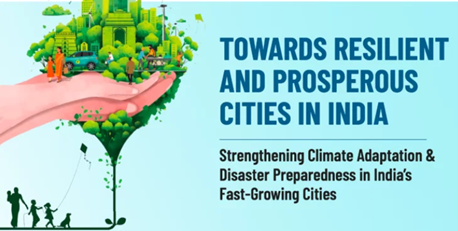PREVIOUS
Towards Resilient and Prosperous Cities in India
July 26 , 2025
167 days
576
0
- This report was released by the World Bank.
- It was prepared in collaboration with the Union Ministry of Housing and Urban Affairs.
- It estimates that the total investment needs for new resilient and the green urban infrastructure and services are $2.4 trillion by 2050 in India.
- The number of Indians living in cities in India is projected to nearly double to 951 million by 2050 from 480 million in 2020.
- Indian cities hold tremendous potential as centres of economic growth with 70 % of new jobs coming from them by 2030.
- However, extreme weather events can lead to billions of dollars in future losses and timely action is needed to deal with it.
- At the same time, intense heat waves and urban heat island effects are already causing temperatures in city centres to rise by over 3-4 degrees above the surrounding areas.
- The very rapid growth of built-up areas is also reducing cities’ capacity to absorb stormwater, making them more vulnerable to floods.
- The report studied 24 Indian cities, with a special focus on Chennai, Indore, New Delhi, Lucknow, Surat and Thiruvananthapuram.
- The report outlined some key recommendations to urgently help Indian cities and support vulnerable populations like implementing programs to address extreme urban heat and flooding, including better regulation of storm water, green spaces, installation of cool roofs, and effective early warning systems.
- Ahmedabad has developed a Heat Action Plan model which aims to strengthen early warning systems, improve healthcare readiness, increase green cover and shift work schedules for outdoor labourers.
- Kolkata has adopted a city-level flood forecasting and warning system.
- Indore has invested in a modern solid waste management system, improving cleanliness and supporting green jobs.
- Chennai has adopted a climate action plan based on a thorough risk assessment and targeting both adaptation and low-carbon growth.

Leave a Reply
Your Comment is awaiting moderation.


